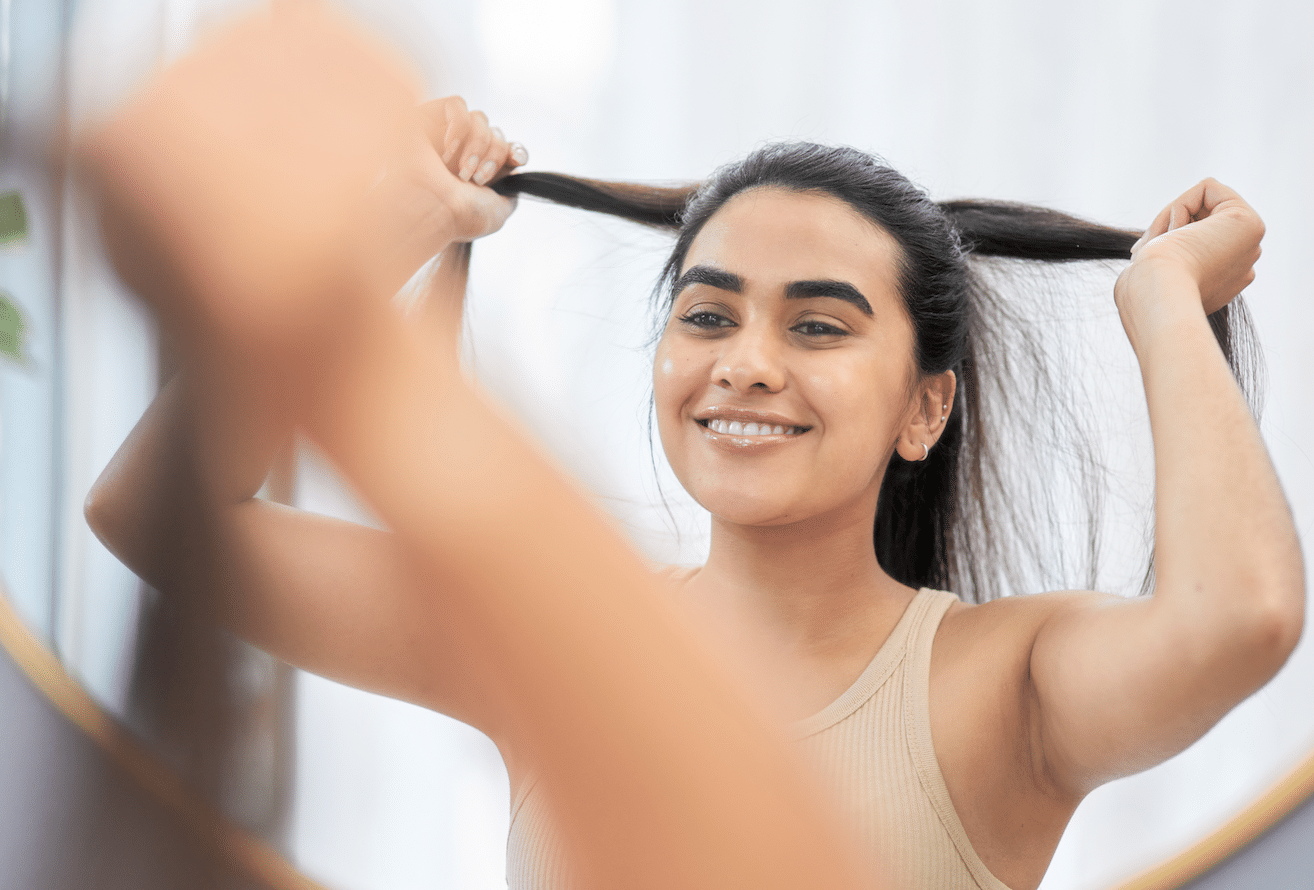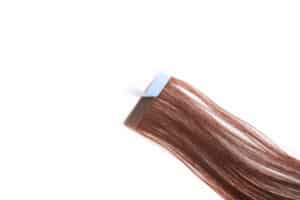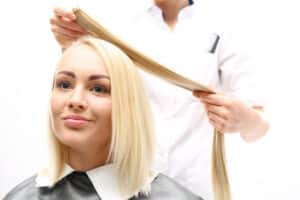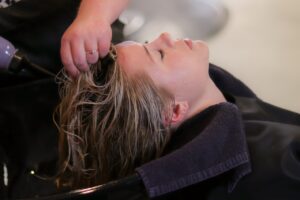Our website is supported by our users. This site contains affiliate links. If you click such a link and make a purchase, we may earn a commission for our endorsement, recommendation, testimonial, and/or link to any products or services from this website. Contact us for Questions

Are Clip In Extensions Damaging? Debunking the Myths and Facts
Ever thought about if clip-in hair extensions might hurt your natural hair? You’re not the only one. It’s super important to think about your hair’s health when picking any hair extensions.
Clip-in hair extensions are a big hit because they let you change your hairstyle fast and for a short time, without having to stick with permanent extensions.
So, are clip in extensions damaging? The good news is clip-in extensions usually don’t cause much damage.
Before using clip-in extensions, make sure your natural hair is clean. That way, the clips can attach firmly to your hair, and there’s less chance of damage. Stick to these rules, and your hair should be just fine. Plus, you’ll have a fabulous new look in no time!
Are Clip In Extensions Damaging?
As you look into hair extensions, you might ask if clip-in extensions are bad for your natural hair. Well, clip-in extensions can cause damage, but they’re usually the safest type of hair extension when used correctly and with great products.
One big reason clip-in extensions are less harmful is you can take them out easily, giving your hair a break to help it stay healthy. But some things can cause problems. For example, if you pull too hard or wear clip-ins for too long, you might get traction alopecia, a kind of hair loss from pulling your hair too much.
To keep your natural hair safe, pick top-quality clip-in extensions. Low-quality products might not hold your hair well and could stress out your hair roots. Also, make sure your natural hair is clean before putting them in. Dirty hair might make the clip slip and hurt your hair.
Here are some tips to keep your natural hair safe when using clip-in extensions:
• Take out the clip-in extensions gently, brushing your hair to separate it from the extensions.
• Don’t wear the extensions too long, and give your hair some rest between uses.
• Don’t pull too hard when putting in the clip-ins; too much force might make you lose hair.
• Choose top-quality extensions, as they’re less likely to cause damage.
So, while it’s possible clip-in extensions can cause damage, they’re one of the safest options. Especially if you use great products, put them in right, and let your hair rest in between uses.
Common Concerns About Clip In Hair Extensions
If you’re thinking about clip-in hair extensions, it’s normal to have some worries. Here’s a quick rundown of common concerns and what you should know.
Follicle damage: One concern is that clip-in extensions might stress your hair follicles and cause harm. It’s important to make sure your natural hair is clean before putting in the extensions. If your hair is dirty, the clips might slide or slip, stressing on your hair follicles and possibly causing damage.
Hair growth problems: You might also worry that clip-in extensions could stop your hair from growing naturally. But, as long as you use high-quality extensions and take good care of them, your hair should keep growing just fine.
Heavy extensions: Extensions that weigh over 180 grams can cause strain on your hair. This is because the heavy wefts can pull on your natural hair and make it break. Choose lighter extensions or divide them into smaller sections to lessen the strain on your hair.
Remember, clip-in hair extensions should be a short-term option. Be sure to care for your hair while using extensions, and give your hair a break if it feels uncomfortable.
Pros and Cons of Clip In Extensions
Now that we’ve gone over clip-in extensions, let’s look at the pros and cons to see if they’re right for you.
Pros:
• Super quick and easy: Clip-in extensions let you change your look in just a few minutes. They’re great for beginners and perfect for special events or everyday wear.
• Less harmful: These extensions use pressure-sensitive clips which won’t hurt your natural hair as much. Unlike more permanent methods, you won’t have to stress about breakage or hair loss from glue and other ways of putting them in.
• Mix it up: With clip-ins, you can try out different lengths, thicknesses, and colors without sticking with them. They come in tons of styles, so you can change your look as often as you want.
Cons:
• Showing clips: If you don’t put them in right, the clips might show. Be sure to match your extensions’ length with your natural hair.
• Weight: Clip-in extensions, especially heavy ones, can pull on your natural hair. Be careful not to use them too much or choose extensions that are too heavy to keep from hurting your scalp.
• Upkeep: Although clip-ins are easier to take care of than other extension methods, you still need to care for them to make them last. This means washing, conditioning, and storing them properly.
Least Damaging Alternatives for Fine Hair
If you have fine or thin hair, you might worry about how clip-in extensions could hurt your hair. Luckily, there are other choices that are kind to your hair and still give you the volume and length you want.
Tape-in hair extensions work great for fine hair. They’re light and easy to put in, making them a favorite for people who want to avoid damage. The tape is strong but gentle on your hair, making sure your natural locks stay healthy and don’t break.
Clip-in hair extensions can also work well for people with fine hair, as they’re temporary and can be taken out daily. The silicone-coated clips at the base of the wefts hold them tight in your hair, while being hidden and gentle on your hair.
Another choice to think about is halo hair extensions. They don’t attach right to your hair but sit on top of your head, spreading the weight evenly and not stressing your roots. This makes them one of the best options for not hurting fine hair.
When picking hair extensions, think about these tips for avoiding damage:
• Be gentle with your extensions when putting them in and taking them out
• Pick the right thickness and weight for your hair type
• Buy high-quality extensions made from real human hair
• Talk to a professional stylist for the right way to put them in and for advice
By choosing the best kind of hair extensions and following the right care tips, you can have longer, fuller hair and still keep your natural hair healthy and free from damage.
Maintenance and Care Tips for Clip-In Extensions
Knowing how to care for your clip-in extensions can stop you from hurting your hair. Here are some tips to help keep your extensions looking great:
First, always brush your extensions before and after using them. Use a wide-tooth comb or a soft-bristled brush, starting at the bottom and working your way up to avoid knots.
When washing your extensions, don’t rub them too hard. Instead, hold the wefts by the clips and put them in warm water. Gently shampoo and condition them, and think about using dry shampoo between washes if your extensions are made of human hair.
Stay away from glues or permanent hair extensions, as they can stress your hair and scalp too much. Stick with clip-ins that you can take out easily at the end of the day.
Try not to brush your extensions while they’re in your hair. If you need to brush them, hold the hair at the root and be as gentle as you can.
When storing your extensions, close all the clips and brush the set. Then put them in a cool, dry place away from direct sunlight, like a closet or dresser drawer. To make them last longer, spray them with leave-in conditioner and store them in a silk or satin bag.
Wrapping It Up
So there you have it. The answer to the question, “are clip in extensions damaging?”
The chances of clip ins causing any damage are low. As long as you pick high-quality extensions and take good care of them, the risk of damage is small.
Keep in mind that clip-in extensions are a short-term fix for making your hair longer and thicker, so they’re great for quick changes. Since they’re easy to put in and take out, they won’t stress your hair too much or stop it from growing.
All in all, clip-in hair extensions can be a damage-free and fun way to try out new looks. Just choose good-quality extensions and take care of them when wearing them.







